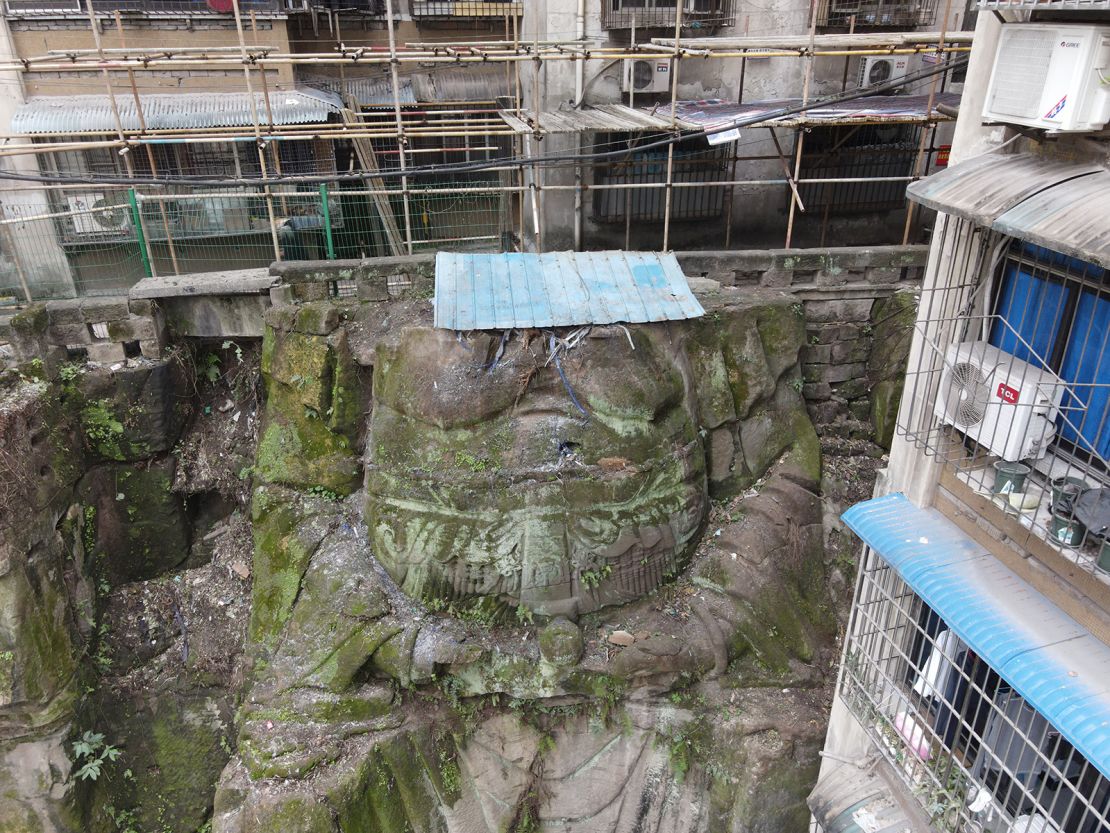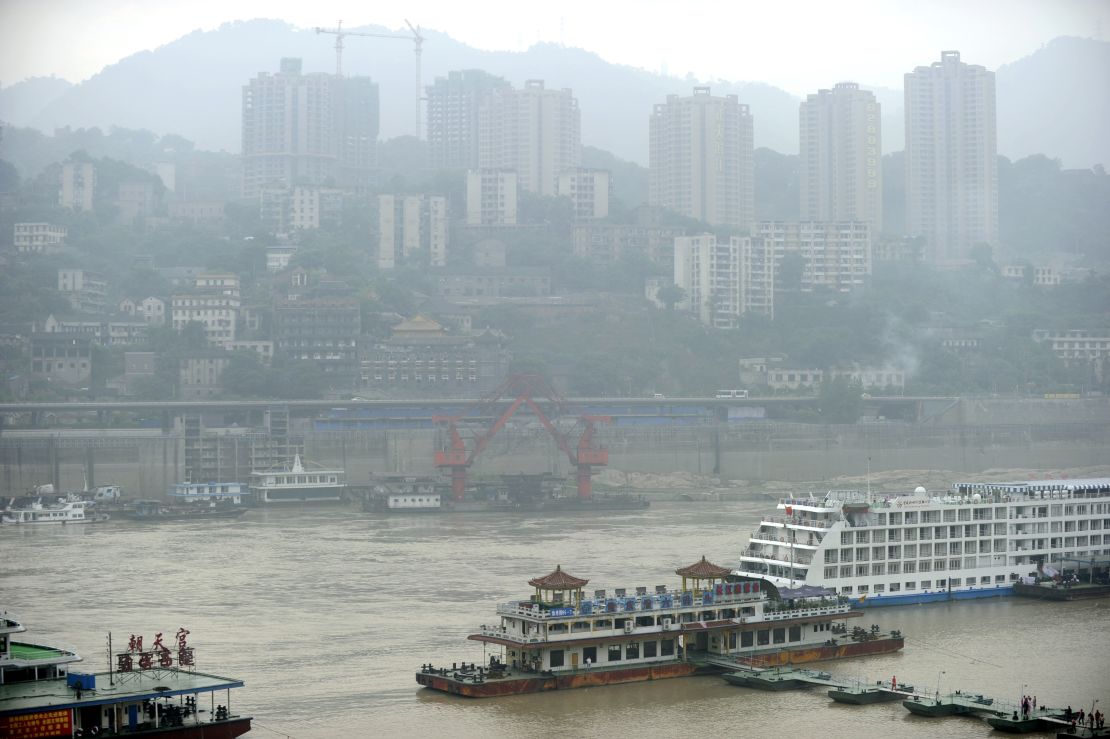For years, residents in an old neighborhood of Chongqing, southwest China, have walked past two apartment buildings built onto a steep slope, oblivious to what lay beneath: a giant religious sculpture carved into the rock face.
The imposing statue – about 30-feet tall and with its head missing – was hidden by a thick layer of foilage, and only uncovered during recent renovations to the residential complex, according to the local Nan’an district government.
Since the accidental discovery, photos of the mysterious headless sculpture have gone viral on Chinese social media, where many have referred to it as “the Buddha,” drawing headlines and sparking immediate interest in its history and origins.
Now only partially covered in moss, the statue is depicted seated with its forearms resting on its lap and its hands holding what appears to be a round stone. The folds and some details of the figure’s clothes are also visible.

The statue is believed to have been built during China’s Republican era (1912-1949), according to a national survey of cultural relics. While that study was conducted just over a decade ago, the sculpture had been neglected and appears to have been completely forgotten until recently.
Its head was likely destroyed during the 1950s, and the apartment buildings around it were built in the 1980s, said the district government on China’s Twitter-like platform, Weibo.
However, experts invited by the district’s cultural relics management office to study the statue said it was not of Buddhist origin and is likely related to a folk religion.
A temple dedicated to the Daoist god of thunder was once built next to the statue, though it was dismantled in 1987, the district government told state-run media outlet The Paper. The religious statue was already designated as a district-level cultural relic before 1997, it added.

That the statue could be so quickly hidden is perhaps, a reflection of the rapid urban expansion that has unfolded in Chongqing. In recent decades, countess structures have been built to accommodate a bustling population of over 30 million people, sometimes at the expense of historical and cultural relics. Because of the city’s mountainous terrain, many homes are built on hillsides.
CNN’s Beijing bureau contributed to reporting.

